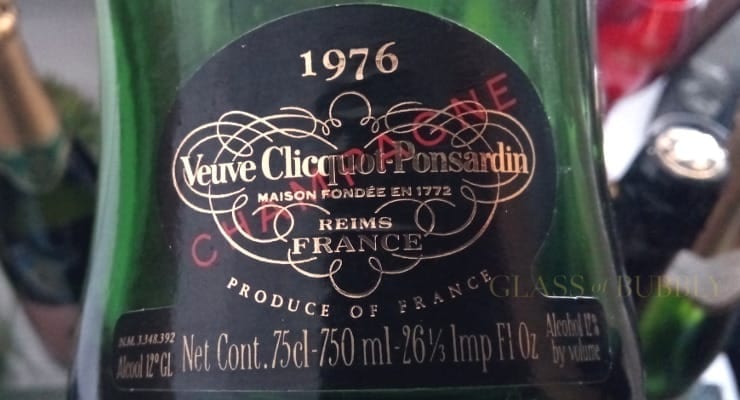So What is a Good Vintage Champagne?
10th October 2016

Let us start by declaring to what exactly a vintage Champagne is which is not that a vintage means old but that it is made from the grapes of only one year’s harvest, whereas non-vintage Champagne is a blend of different years’ harvest. It is down to the winemaker themselves to declare which year should be a vintage, many will choose the same year as the growing conditions will have been perfect to produce better grapes than normal though it will not always be that every Champagne label will declare that year a vintage.
So, we now know what a vintage Champagne actually is, how do we go about selecting a good one as the winemakers, who are the experts in fact, have already declared the vintage to be a great wine – Are all vintages then great or is there a variation? Yes, there is certainly a variation and some vintage Champagnes go on to be great whereas others will be just OK or less than what was expected of them to be.
Undoubtedly, when we pick up a vintage Champagne we should be in for a better tasting wine over a standard range such as a Brut which we are likely to purchase down at the local supermarket. Price of vintages will be more expensive than non-vintage and as they age further, especially if they have had good reviews, the prices of them will increase further as their tastes will improve and of course, they become rarer as other bottles of them are drunk around the world. Some of the grand marques, such as Bollinger, Veuve Clicquot, Ruinart, Dom Pérignon, will be some of the most sort after vintage Champagnes on the market, especially when we look at ages going back to past decades.
Vintages, for any Champagne lover, opens up a whole new world to explore, in fact, it offers a gold mine of tastes and experiences, even if it may open up a major hole in your purse/wallet. I have been lucky enough to taste vintages from the 1990’s, 1980’s, 1970;s and 1960’s in very good company being hosted by some of the top winemakers of major Champagne houses. “Each time a vintage Champagne is opened you are in the presence of a unique moment, history is released as that cork is popped” I always say “You are tempted to take more time pouring and studying the wine, watching closely the fine bubbles rise and tasting is more of a slow motion process as you absorb all the flavours and aromas with each and every mouthful“.
So, how do you tell which is a good vintage? Assuming you are buying to enjoy now, I would recommend 2008 as this is usually referred to being the best of the last decade and I would also note 2002 as well thanks to some perfect warm weather conditions for crops in the Champagne region (investigate 2012 as well if you are happy to store your wine to enjoy in 2020 as much is expected of this year too).
The 1990’s produced some fine vintages with 1998, 1995 and especially 1990 years to look out for. Going back further, 1989, 1988, 1985 and 1982. There after, ie 1970’s and before, we may be paying for rarity over taste as some wine experts will say that the Champagne is past it’s best at this age, but this will obviously be down to how long they have been stored and how/where they have been stored. Saying this, I tasted the 1976 Grande Dame from Veuve Clicquot and it was an amazing vintage Champagne.

Having tasted over 1,000 different Champagnes I can say that you get to a point where you really wish to be challenged with great complexity and history and vintages is the key to this path. Just like trainspotters who are seeking those elusive engine numbers, rare vintages are really scalps for Champagne lovers – Yes, I will admit that I am always tempted to keep the empty bottle at the end of the tasting and even the cork too, such is the pull of rare vintages and your desire to hold on to the memories of having tasted them!
If you are new to vintage Champagne I would suggest a simple introduction by purchasing a standard Brut from a grande marque and then one of their recent vintages to experience the differences. Once you discover how a vintage compares to a non-vintage you can then start going back into the vintage history of that Champagne house and experiences their wine making history.
![]()
Christopher Walkey
Co-founder of Glass of Bubbly. Journalist and author focused on Champagne & Sparkling Wines and pairing them with foods.
